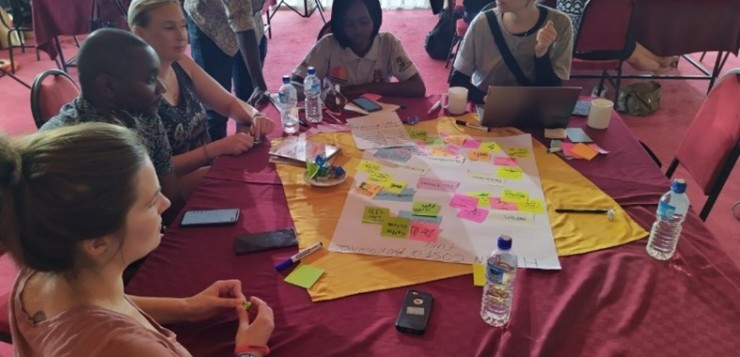Being a good mentor in problem-based learning (PBL) is not an easy task. As described by M. Weimer, mentoring requires various attitudes and skills. The first step to becoming a good PBL mentor is to understand how different mentor characteristics and working methods affect students and their learning outcomes. The second step is to develop these methods and characteristics and put them into practice.
HAMK has been promoting and training about problem-based learning (PBL) around the world. A successful method to implement PBL is through student projects, also referred as student challenges, where students work in teams to provide solutions to external partners.
Within this work, a simple mentoring guide has been developed for teachers implementing PBL in student projects for the first time. Here we summarize the main messages of the mentoring guide.
Mentor’s role and responsibilities
Mentoring is one of the most pivotal elements of PBL student projects, determining its success. However, it’s crucial to understand that despite the enormous importance of mentoring, a mentor is not a project manager or a team leader. Mentoring is about supporting, encouraging and coaching students and student teams.
The mentor’s responsibilities depend on the specific PBL student project. It is important to discuss and agree on detailed responsibilities before the project starts. There can be one or multiple mentors guiding a student team.
The main responsibilities of a mentor in all PBL student projects can be described as:
- Acting as a link between the course coordinator and the students.
- Facilitating and encouraging discussions and co-creation between the projects’ stakeholders which may include students, project partners, other teachers etc.
- Facilitating evaluation and feedback with the project partner during and after the project.
- Ensuring that the project work proceeds in the right direction with the given timeline.
- Ensuring that students obtain the determined learning outcomes.
Mentoring methods
Regular meetings with student teams are important. The mentor should be present on e. g. field trips or other visits. This enables us to monitor students and student teams, their dynamics and the learning process, and to step in if needed to support teams and guide them in finding solutions. A good mentor enhances learning in PBL
The core PBL method is to evaluate teams and individuals and their learning process throughout the course and regularly give feedback. Feedback and debriefing sessions are especially important after meeting with the partners and after field trips. Constant evaluation offers insights into students’ learning process and on how well the students are learning. This information is important for both the mentor and the students.
The mentor should ensure that students have access to relevant knowledge, tools and methods, and provide guidance on how to utilize these. Guidance is especially important on topics should as project planning, research methods and approaches and reporting. These are core skills students will need in the world of work.
Building a safe learning environment through listening, encouraging open and constructive communication and creating a positive class atmosphere is crucial for developing student’s innovation and critical thinking skills.
The mentor is not only working with students but also with other project stakeholders. We can’t overemphasize the importance of regular meetings with other mentors, staff and partners.
Characteristics of a good mentor
The mentor does not need to be an expert in all fields, but the mentor should have expertise in the project topic and an understanding of the local context. It is advisable for the mentor to be more experienced than the students, as this helps to build authority and respect towards the mentor. PhD students, alumni and faculty staff are good mentor choices, yet the mentor can also come outside of academia, e. g. from the private sector. In each PBL project, mentors should be carefully picked to match the requirements of the given project.
More important than substance knowledge is that the mentor has an understanding of PBL and learning processes and has experiences in different learning situations. Or at least, is willing to learn and gain experience. The mentor should not pour his/her knowledge into students, but rather guide and support students in their learning path
A main characteristic of a good mentor is the ability to give up control: the aim of PBL and of the mentor is to let the student teams work as independently as possible. The mentor’s duty is to stay up to date on the teamwork and its progress and intervene only if necessary.
The mentor should be prepared so that things may not always go as planned. If issues arise, the mentor should be flexible and able to make fast decisions. Good advice is to “be prepared for anything and remember everything will eventually solve out”.
The mentor should have a positive attitude towards students, and confidence that students can take the lead in their work and in their learning. Common sense is also a great tool for the mentor.
Becoming a good PBL mentor requires time, effort and practical experience. However, it’s worth a while to put initial effort into developing functional mentoring methods and characteristics. The outcome will be highly rewarding both to the mentor as well as to students.
Authors
Ulla-Maija Knuutti, Senior lecturer at HAMK Edu Research Unit
Satu Määttänen, Research assistant in HAMK Bio




